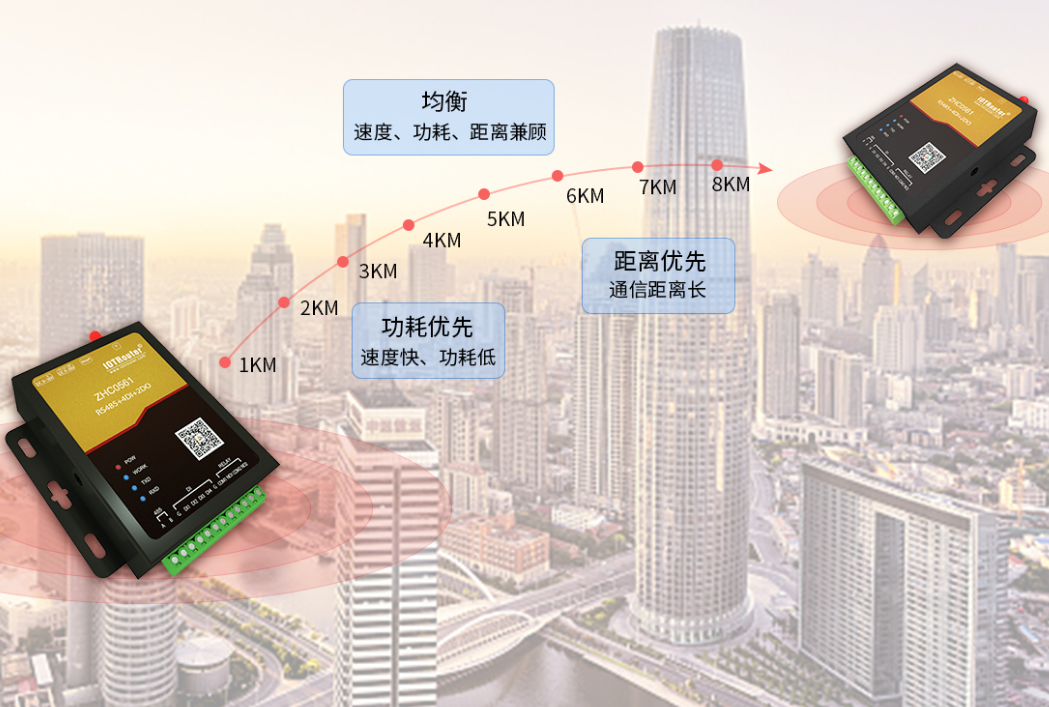LoRa technology was originally a spread spectrum wireless modulation patented technology developed by a French company, Cycleo. After it was acquired by the American Semtech company in 2012, Semtech conducted strong marketing of the technology. In order to introduce other companies, including some mobile operators, to participate in the LoRa ecosystem, the LoRa Alliance was established at the Mobile World Congress in Barcelona in February 2015. It was co-sponsored by HP, Cisco, IBM, Foxconn, Semtech and other manufacturers. , is an open non-profit organization. Alliance members are expanding rapidly. So far, there are more than 500 members. Alliance members include multinational telecom operators, equipment manufacturers, system integrators, sensor manufacturers, chip manufacturers and innovative startups. etc., these members cover Europe, North America, Asia, Africa and other regions. After several years of development, LoRa technology has now formed a complete IoT ecosystem from chips to solutions.
Internationally, LoRaWAN has built networks in more than 40 countries, conducted pilot projects in more than 350 cities, and has 67 network operators. In the United States, Senet’s network covers 225 cities in 23 states. Comcast, the largest cable TV company, uses LoRa technology to first complete network deployment in Philadelphia and San Francisco, and provide metering related (meter reading, etc.) and environmental monitoring related (temperature and humidity, pollution, noise monitoring, etc.) and tracking and positioning-related services; in France, Orange has completed nationwide coverage of the LoRaWAN network in France; in India, Tata has built networks in Mumbai and Delhi and put them into use in the logistics industry; in Australia, Telstra has been piloting in Melbourne; in South Korea, SK Telecom deployed a nationwide LoRa network in the first half of 2016, providing LoRa-based IoT services and announcing charging methods. At the end of May 2018, Google Cloud joined the LoRa Alliance as a sponsor member. Google’s decision to join the LoRa Alliance means that the LoRaWAN protocol and LoRa technology have been adopted globally as the de facto standard for IoT connections.
Domestically, there are more than 40 Chinese member companies including ZTE among the members of the LoRa Alliance. As a leader in domestic LoRa technology, ZTE initiated the establishment of the China LoRa Application Alliance (CLAA) in early 2016 and established the China LoRa Application Alliance (CLAA) at the end of 2016. ZTE CLAA Technology Co., Ltd. (ZTECLAA), a subsidiary focusing on LoRa technology, has more than 880 CLAA members, more than 100 application types, and more than 40 commercial uses. At the same time, the CLAA headquarters in Suzhou Industrial Park has also officially opened [3]. In 2017, LoRa Alliance member ZTE Kela added 10 city-level LoRa network coverage, and more than 13,982 LoRa gateways and 153,000 LoRa nodes have been installed in China. Currently, there are three publicly released LoRa networks in China, including the Guizhou Zhongan Cloud Network covering the entire Guizhou Province, the Guangzhou Chinese Academy of Sciences Computer Network Information Center network covering the Nansha District of Guangzhou (803 square kilometers), and the Guangzhou Chinese Academy of Sciences Computer Network Information Center covering the Beilin District of Xi’an. Shaanxi Radio and Television Network. In addition, China has 16 private/experimental LoRaWAN (>10 GWs) networks and has installed 1,732 gateways.

In April 2018, Semtech announced that the IoT platform based on LoRa technology jointly deployed by Alibaba Cloud and China Unicom Zhejiang Branch in Hangzhou and Ningbo, China, has begun commercial trials. Alibaba Cloud will support a rich ecosystem spawned by LoRa-based sensors. Alibaba has carried out LoRaWAN experiments in its own business scenarios. For example, the Cainiao Park has a total construction area of approximately 200,000 square meters. This park uses 4 LoRaWANs. Micro gateways and 4 base stations cover the entire campus. China Unicom Zhejiang Branch will deploy a LoRaWAN network based on LoRa technology in Hangzhou and Ningbo before the end of 2018 to expand the scope of its IoT network services.
In August 2018, Tencent announced that it would join the LoRa Alliance at the highest level, which means that the development pace of LoRa in the global and Chinese markets is constantly accelerating. Tencent has made relevant investments in LoRaWAN technology and applications and will support the further development of the LoRaWAN ecosystem. Tencent also announced plans to build a LoRaWAN network in Shenzhen with local partners to provide LoRaWAN integrated solutions from devices, edge to cloud on its network for various IoT applications and end users (such as government public services).
LoRa technology has developed rapidly in recent years. LoRa-based solutions have played an important role in promoting the continued growth of the Internet of Things industry. However, this technology and the market are still in their infancy and require continued investment and cooperation from all parties involved. development, and its advantages cannot be fully realized until large-scale deployment is achieved. In this new wave of narrowband Internet of Things development, it is recommended that domestic enterprises implement projects first. LoRa technology requires not only product innovation, but also project application innovation. At the same time, in terms of technical solutions, in a short period of time, other technologies (such as NB-IoT) will be used in parallel with LoRa in the LPWAN field. They have no obvious technical advantages and disadvantages. They are mainly applicable to different types of services based on different types of service requirements. Segment application areas. Therefore, achieving a better profit model and closely integrating with the application industry are the focus of all enterprises in the industry.
Trefwoorden: lora
